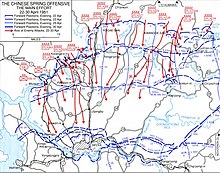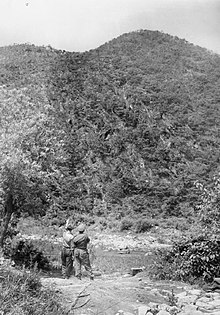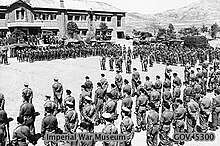Battle of the Imjin River
Major confrontation during the Chinese Spring Offensive of the Korean WarThe Battle of the Imjin River, also known as the Battle of Solma-ri or Battle of Gloster Hill in South Korea, or as Battle of Xuemali in China, took place 22–25 April 1951 during the Korean War. Troops from the Chinese People's Volunteer Army (PVA) attacked United Nations Command (UN) positions on the lower Imjin River in an attempt to achieve a breakthrough and recapture the South Korean capital Seoul. The attack was part of the Chinese Spring Offensive, the aim of which was to regain the initiative on the battlefield after a series of successful UN counter-offensives in January–March 1951 had allowed UN forces to establish themselves beyond the 38th Parallel at the Kansas Line.
Read article
Top Questions
AI generatedMore questions
Nearby Places

Gloucester Hill Battle Monument
War Memorial in South Korea

Hantan River
River in South Korea
Seolmacheon

Hansung University
Private university in Seoul, South Korea
Yangju highway incident
2002 accidental deaths in South Korea

Gamaksan (Gyeonggi)
Mountain in South Korea

Chinese spring offensive
Military offensive conducted the Chinese PVA during the Korean War

Military Cemetery for North Korean Soldiers
Cemetery in Paju, South Korea








